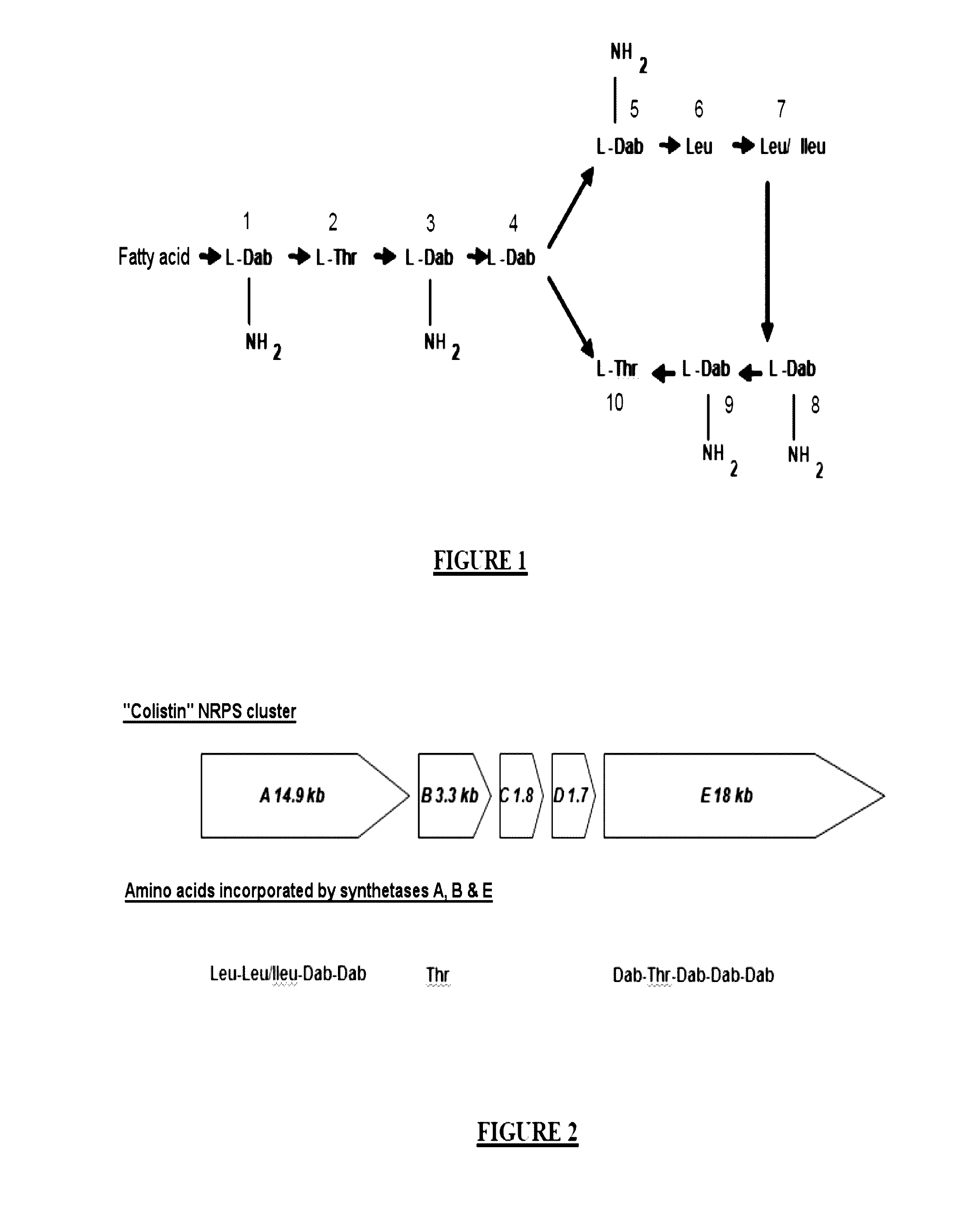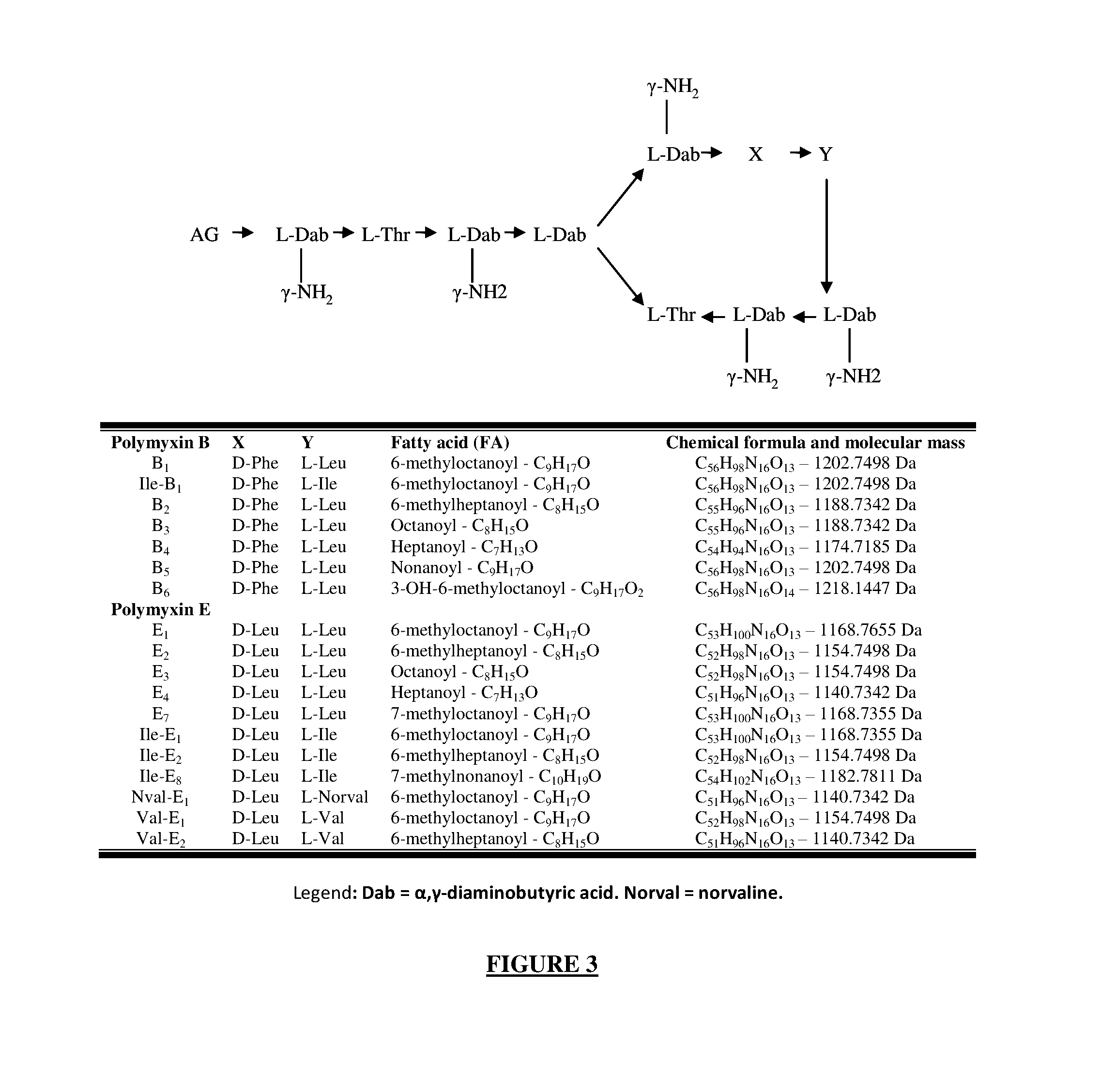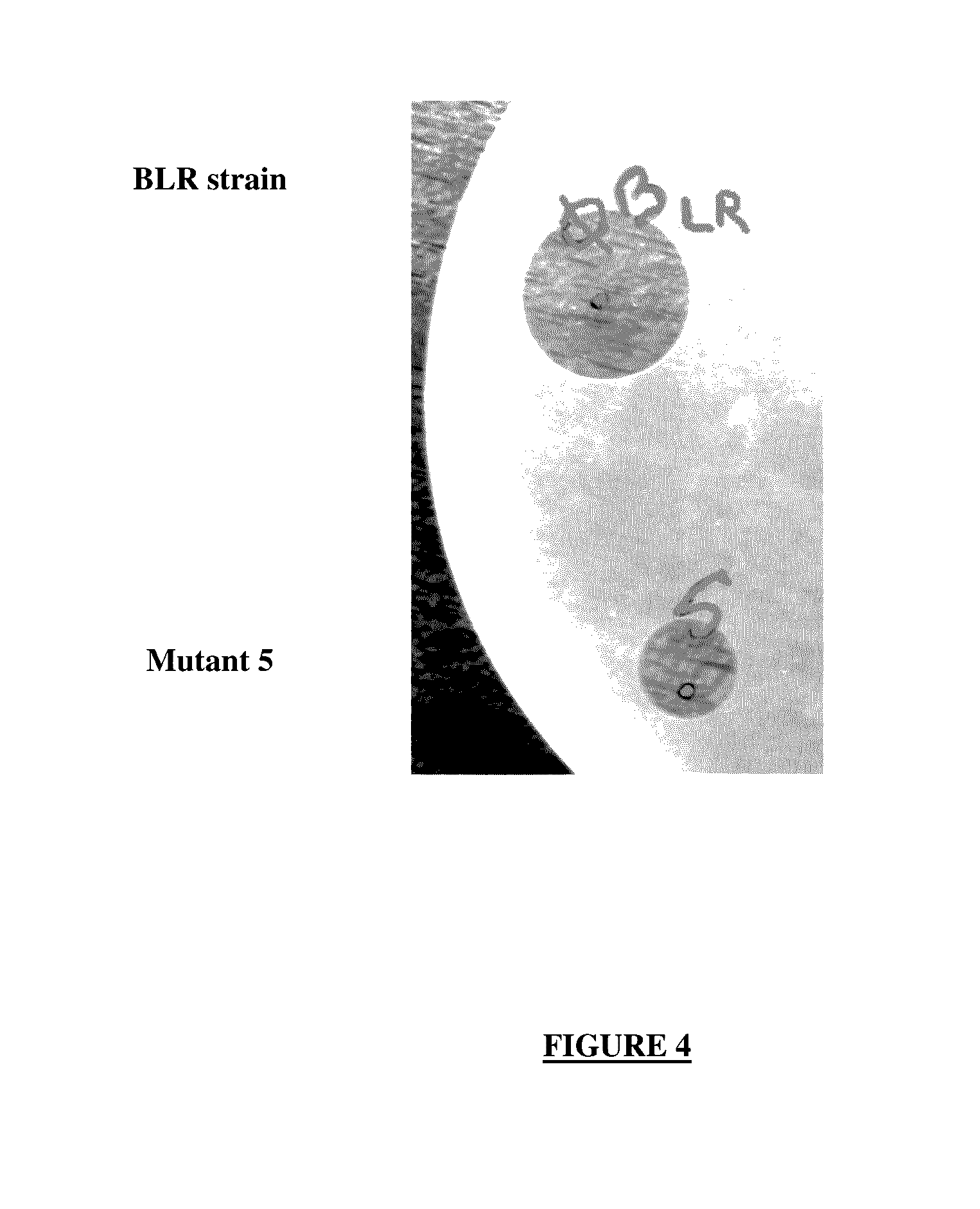Colistin Synthetases and Corresponding Gene Cluster
a technology of collistin and synthetases, which is applied in the field of antibiotic molecules, can solve the problems of unsatisfactory purification of a molecule from fermentation media, low degree of molecule purity, and toxic effects of collistin,
- Summary
- Abstract
- Description
- Claims
- Application Information
AI Technical Summary
Benefits of technology
Problems solved by technology
Method used
Image
Examples
example 1
Isolation and Sequencing of the Genetic System for Producing Colistin
[0161]A microorganism (B-LR) producing colistin (polymyxins E1 and E2), belonging to the Paenibacillus alvei species, was isolated from the environment and cultured. A genomic DNA library was constructed in Escherichia coli using fosmid vectors (900 clones). The search for the genes encoding the enzymes which synthesize colistin was carried out by degenerate PCRs. The primers used were defined with the aim of amplifying the domains specializing in the integration of diaminobutyric acid (Dab), which is the amino acid most representing the structure of colistin (6 amino acids / 12). Three clones of interest were selected from the sequence (Roche GS FLX). The sequences obtained could be assembled over 50 kb. The open reading frames were sought. Five of them called A, B, C, D and E describe a cluster of approximately 41 kb with A (14.9 kb), B (3.3 kb), C (1.8 kb), D (1.7 kb) and E (18.9 kb), which is represented in FIG. ...
example 2
Comparison of the Adenylation Domains of Various Paenibacillus Strains Producing Molecules Belonging to the Polymyxin Family
[0163]The enzymes involved in polymyxin production belong to the non-ribosome synthetase (NRPS) family. These synthetases are capable of producing a particular peptide without relying on the translation of an mRNA template. The specificity of the peptide chain produced depends on a precise sequence of amino acids of the synthetase constituting an adenylation domain. Four adenylation domains were identified in silico for the synthetase A of B-LR, one for B and five for E. Each adenylation domain contains a signature of ten amino acids which confers it on the specificity of integrating a precise amino acid into the non-ribosomal peptide during elongation. These signatures were identified in silico and compared to those described in the literature (Table 4) using the program available at the following web address: http: / / nrps.informatik.uni-tuebingen.de / .
[0164]The...
example 3
Construction of a pmxE-Mutant and Analysis of the Colistin Production Thereof
[0169]A sequence of 1650 bp beginning at the end of pmxD and finishing at the start of pmxE was selected and amplified. It has the particularity of possessing a unique SacII enzyme restriction site. The amplified sequence was cloned into the pGEM® 7Z plasmid. The gene encoding apramycin resistance was integrated at the SacII restriction site. This construct was introduced into B-LR by electroporation. The selection of the mutants having undergone a double recombination event was carried out by culturing on agar medium supplemented with apramycin. The antiomicrobial activity of the supernatant of the mutants was compared with that of B-LR. The culture supernatant of mutant 5 is less active than that of the wild-type B-LR bacterium on P. aeruginosa (FIG. 4).
PUM
| Property | Measurement | Unit |
|---|---|---|
| temperature | aaaaa | aaaaa |
| molecular weights | aaaaa | aaaaa |
| molecular mass | aaaaa | aaaaa |
Abstract
Description
Claims
Application Information
 Login to View More
Login to View More - R&D
- Intellectual Property
- Life Sciences
- Materials
- Tech Scout
- Unparalleled Data Quality
- Higher Quality Content
- 60% Fewer Hallucinations
Browse by: Latest US Patents, China's latest patents, Technical Efficacy Thesaurus, Application Domain, Technology Topic, Popular Technical Reports.
© 2025 PatSnap. All rights reserved.Legal|Privacy policy|Modern Slavery Act Transparency Statement|Sitemap|About US| Contact US: help@patsnap.com



